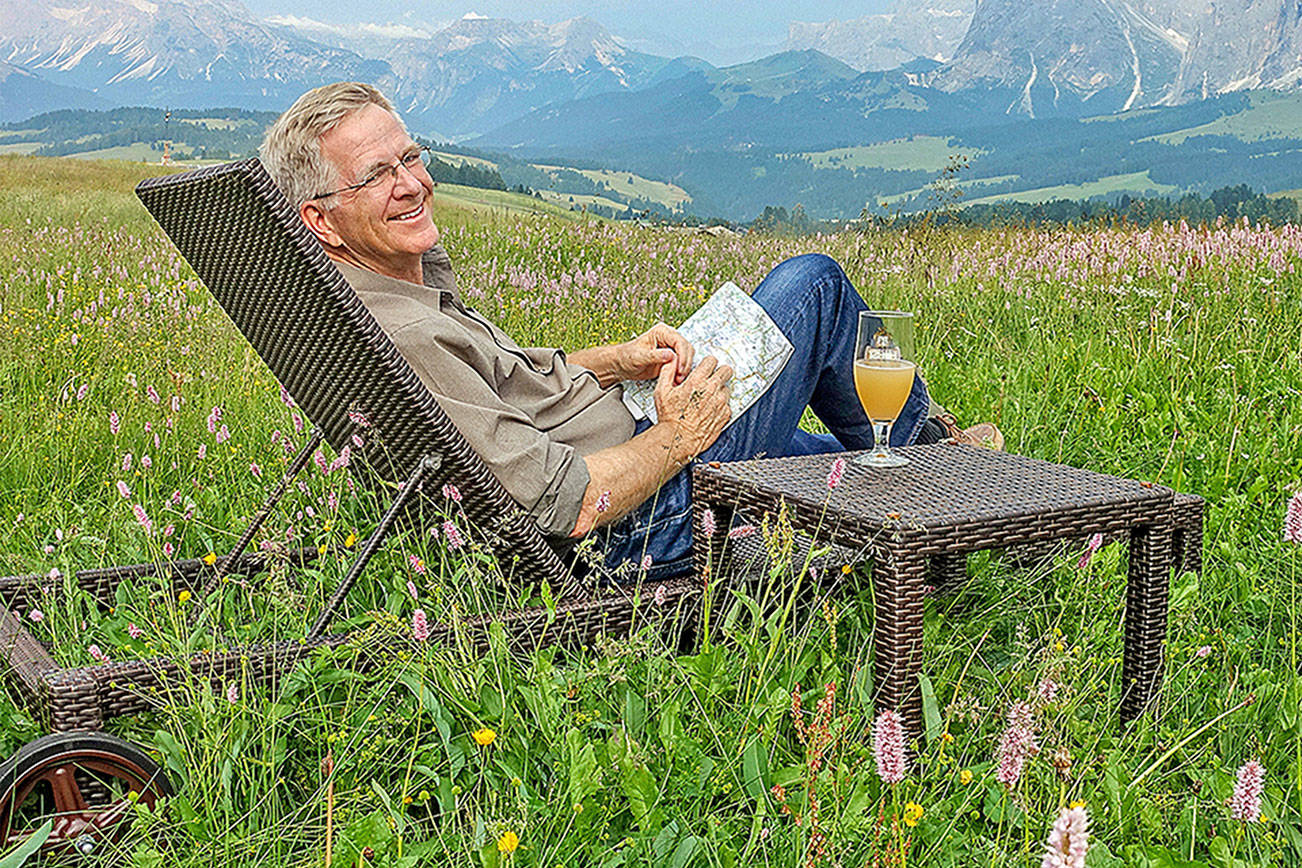Rick Steves on the Italian Alps and basking in the Dolomites
[ad_1]
Leaning against my lounge chair, I take advantage of the warmth of the sun on my skin. A vibrant sea stretches before me, but it is a sea of ​​wild flowers. I’m not at the beach – I’m on a farm, looking out over Europe’s largest alpine meadow, tended by goats and cows munching on. In the distance, snow-capped peaks rise boldly against the blue sky. These are the Italian Alps, the Dolomites.
My soundtrack is the happy laughter of Italian children enjoying a petting zoo full of alpine critters. A few meters away, their parents are sipping wine on the veranda of their guesthouse, taking full advantage of this dolce far niente (the sweetness of doing nothing) … like me.
The vertiginous meadow called the Alpe di Siusi (or “Seiser Alm†in German) seems to float above the town of Bolzano, separating two of the most famous valleys from the ski resorts of the Dolomites, Val di Fassa and Val Gardena. Measuring 3 miles by 7 miles and culminating at 6,500 feet high, Alpe di Siusi is dotted with farm huts and happy hikers enjoying the gentle trails. These mountains differ from the rest of the Alps because of their dominant rock type – limestone – which forms sheer vertical walls of white, gray and pale pink rising sharply from the green valleys and meadows.
At the head of the meadow, the Sassolungo mountains provide a backdrop of the fairytale Dolomites. And opposite, Mount Schlern – a long, flat ridge ending in spooky boulders – stands boldly in the haze of the Italian peninsula. Unsurprisingly, the Schlerns gave ancient people enough plagues to spawn legends of supernatural forces. The fear of the witch Schlern, the current mascot of tourist brochures, was the cause of the inflamed deaths of many medieval city dwellers.
Nature reserve, the pasture rocked by the summits is almost forbidden to cars. A cable car takes visitors to the park from the valley below. In the park, buses run between hikers and key points along the small road to the foot of the picturesque peaks of Sasso. The prairie walks are ideal for wildflower walks, while the chairlifts serve as a springboard for more spectacular and demanding hikes. Mountain bikes are easy to hire, welcome on many ski lifts, and allowed on the prairie country lanes.
Alpe di Siusi is my favorite stopover in the Dolomites because of its excellent views, but also its easy accessibility and the variety of walks and hikes. There is also the charm of the neighboring village of Castelrotto, which serves as my home port.
Castelrotto is also a good dose of Germanic culture in Italy: there is yogurt and yodel for breakfast… Wiener cutlets and strudel for dinner. The region has long faced north, first as part of the Holy Roman Empire, then firmly into the Austrian kingdom of the Habsburgs. After Austria lost World War I, its “Sudtirol” (South Tyrol) became the “Alto Adige” of Italy. Mussolini did what he could to Italianize the region, including giving each town an Italian name (like Castelrotto, also known as Kastelruth).
This bitterly disputed history has left this northeast corner of Italy both bicultural and bilingual. Signs and literature in the Autonomous Province are in both languages, but the emphasis is on der Deutsch. He still feels Austrian, culturally as well as geographically. The Germanic color survives in the form of a blue apron, a red face and a lederhosen. Most locals still speak German first, and many feel a closer connection to their Germanic ancestors than to their fellow Italians. While most have a working knowledge of Italian, they watch German television, read auf Deutsch newspapers and live in Tyrolean-style villages. The government has wooed grumpy German-speaking locals with economic breaks that make it one of the wealthiest regions in Italy.
I love coming back to Castelrotto after a hike in the meadow. It was built for farmers rather than skiers, so it has more character than any town around. As I enter the church, I enjoy the practice of the choir. Then, as I walk out of church at 3 p.m., the bells ring as I watch the happy parade of parents bringing home their preschool children. These idyllic moments may seem like cultural clichés, but they are genuine, not tourist shows. It’s times like these that make it easy to enjoy this high altitude Germanic whirlpool in the Italian whirlpool.
Edmonds resident Rick Steves (www.ricksteves.com) writes European guides, hosts travel shows on public television and radio, and arranges European tours. This article was adapted from his new book, “For the love of Europe”. You can email Rick at [email protected] and follow his blog on Facebook.
[ad_2]

